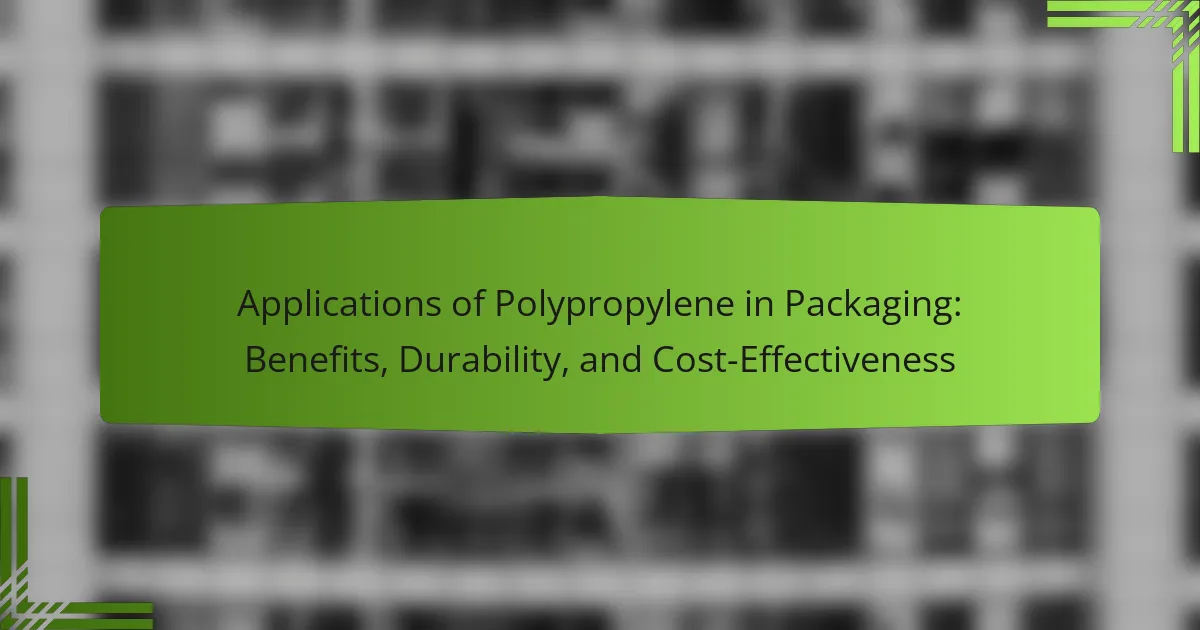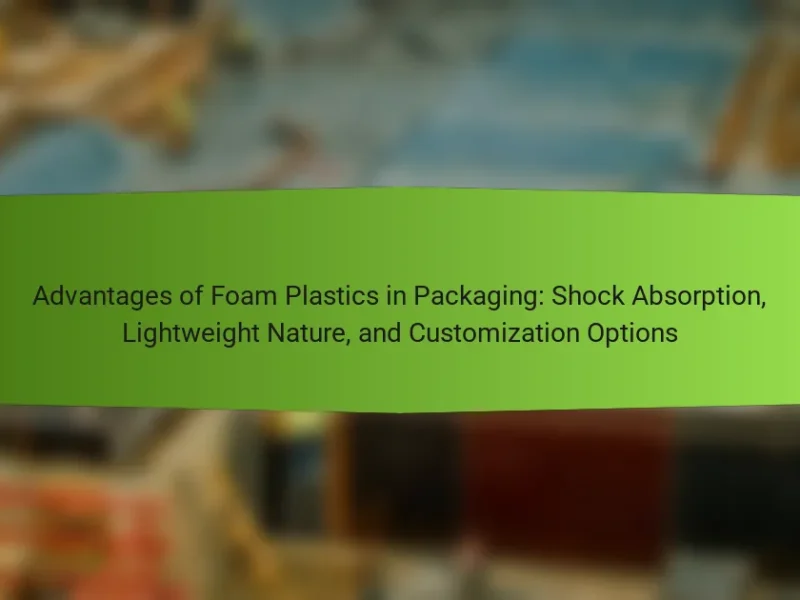Polypropylene is a versatile and durable material extensively used in packaging applications, including containers, bottles, and caps. Its lightweight nature reduces shipping costs, while its excellent moisture and chemical resistance ensure the integrity and longevity of packaged goods. Polypropylene’s recyclability supports sustainability efforts, making it an environmentally friendly choice. Additionally, the material’s ability to be molded into various shapes, coupled with its clarity and glossiness, enhances product visibility on retail shelves. The global polypropylene market demonstrates its widespread acceptance and cost-effectiveness, driven by low production costs and high strength-to-weight ratio, further establishing its role in reducing waste and extending product shelf life.
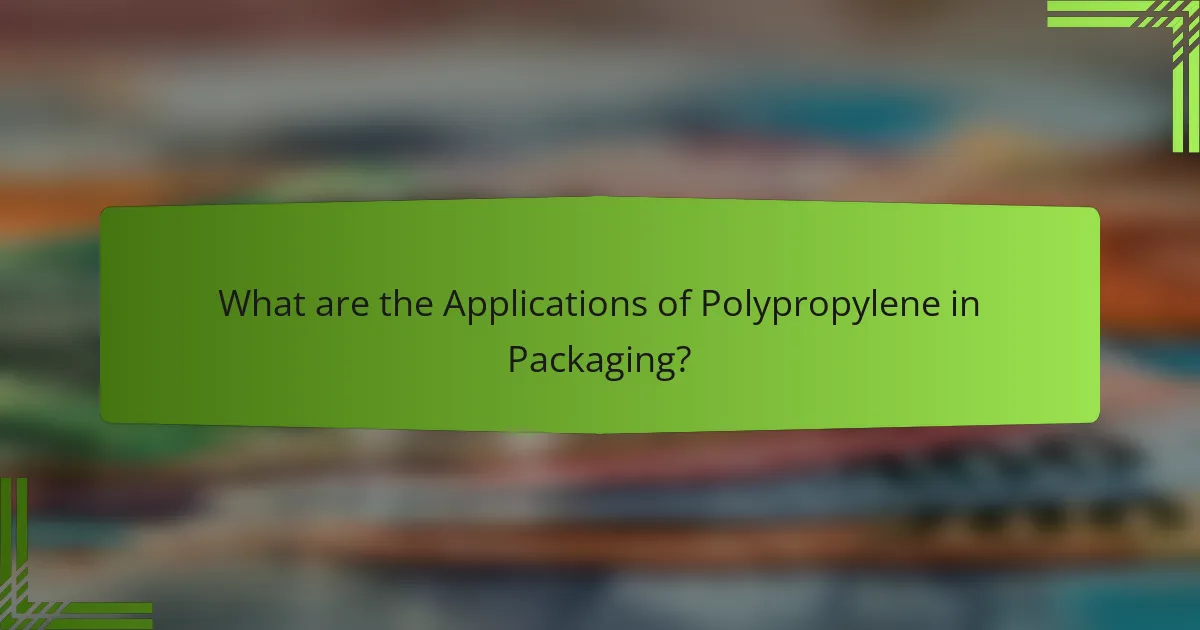
What are the Applications of Polypropylene in Packaging?
Polypropylene is widely used in packaging due to its versatility and durability. It is commonly utilized for making containers, bottles, and caps. Polypropylene packaging is lightweight, which reduces shipping costs. It also offers excellent moisture resistance, making it suitable for food packaging. The material is recyclable, contributing to sustainability efforts. Additionally, polypropylene can be easily molded into various shapes and sizes. Its clarity and glossiness enhance product visibility on shelves. This material is also resistant to chemicals, ensuring the integrity of packaged goods.
How is Polypropylene used in various packaging formats?
Polypropylene is widely used in various packaging formats due to its versatility and durability. It is commonly found in flexible packaging, such as bags and pouches. These polypropylene bags are lightweight and resistant to moisture, making them ideal for food products. Rigid packaging formats also utilize polypropylene, including containers and bottles. These containers provide excellent barrier properties, protecting contents from external factors.
Polypropylene is also used in thermoformed packaging, which allows for custom shapes and sizes. This adaptability makes it suitable for a range of products, from electronics to cosmetics. Additionally, polypropylene can be easily printed on, enhancing branding opportunities. Its recyclability further supports its use in sustainable packaging solutions. Overall, polypropylene’s properties make it a preferred choice across diverse packaging applications.
What types of packaging utilize Polypropylene?
Polypropylene is used in various types of packaging. Common applications include food containers, such as takeout boxes and microwave-safe dishes. It is also found in flexible packaging like bags and wraps. Additionally, polypropylene is used for rigid packaging, including bottles and caps. Its versatility extends to labels and adhesive tapes. The material is favored for its moisture resistance and durability. These properties make it suitable for both consumer and industrial packaging solutions.
How does Polypropylene compare to other packaging materials?
Polypropylene is lightweight and has excellent moisture resistance compared to other packaging materials. It offers better flexibility and clarity than materials like polyethylene. Polypropylene also has a higher melting point, making it suitable for hot-fill applications. In terms of cost, polypropylene is often more economical than materials such as polystyrene or PVC. Additionally, it is recyclable, which adds to its environmental appeal. Studies show that polypropylene can withstand stress better than many alternatives, enhancing its durability in packaging. Overall, polypropylene’s unique attributes make it a preferred choice in various packaging applications.
What are the key benefits of using Polypropylene in packaging?
Polypropylene offers several key benefits in packaging. It is lightweight, which reduces shipping costs. Polypropylene is also resistant to moisture, making it ideal for food packaging. This material has excellent clarity, allowing consumers to see the product inside. It is durable and can withstand various temperatures without losing integrity. Polypropylene is recyclable, supporting sustainability efforts. Additionally, it has a low production cost, making it economically advantageous for manufacturers. These attributes collectively enhance the efficiency and effectiveness of packaging solutions.
How does Polypropylene contribute to sustainability in packaging?
Polypropylene contributes to sustainability in packaging by being recyclable and lightweight. Its recyclability allows it to be repurposed, reducing waste in landfills. This material has a lower carbon footprint compared to other plastics. Polypropylene production requires less energy, leading to decreased greenhouse gas emissions. Additionally, its lightweight nature reduces transportation emissions. Studies show that using polypropylene can lower overall packaging weight by up to 40%. This efficiency contributes to more sustainable supply chains. Overall, polypropylene’s properties support eco-friendly practices in the packaging industry.
What are the health and safety advantages of Polypropylene?
Polypropylene offers several health and safety advantages. It is non-toxic and safe for food contact, making it suitable for packaging food products. Polypropylene is resistant to moisture, preventing the growth of bacteria and mold. This property enhances food safety and shelf life. Additionally, polypropylene is lightweight, reducing the risk of injury during handling. It is also recyclable, contributing to environmental safety. Furthermore, polypropylene does not release harmful chemicals when incinerated, minimizing air pollution risks. These characteristics make polypropylene a preferred choice in various applications, especially in food packaging.
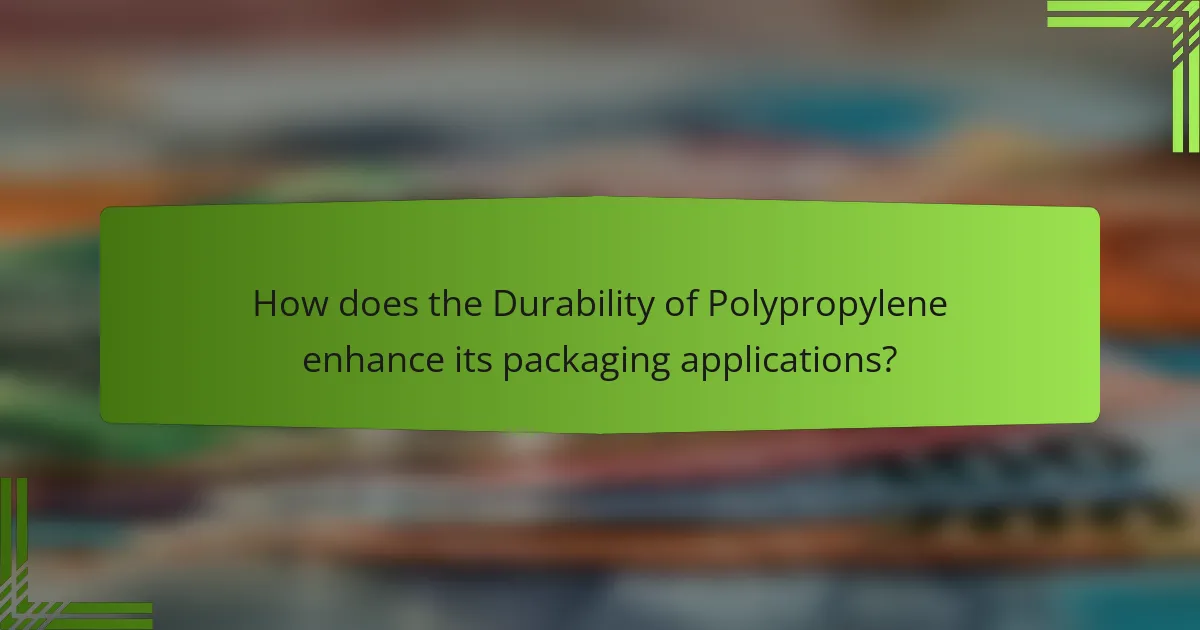
How does the Durability of Polypropylene enhance its packaging applications?
The durability of polypropylene significantly enhances its packaging applications by providing strength and resistance to physical stress. This material can withstand impacts and abrasions, ensuring the integrity of packaged goods. Polypropylene’s chemical resistance protects contents from moisture, oils, and solvents. Its lightweight nature reduces shipping costs while maintaining durability. Additionally, polypropylene can endure temperature fluctuations without losing structural integrity. These characteristics lead to longer shelf life for products. Research shows that polypropylene packaging reduces waste due to its reusability and recyclability. Overall, the durability of polypropylene makes it a preferred choice in various packaging industries.
What factors contribute to the durability of Polypropylene?
The durability of polypropylene is influenced by its chemical structure, resistance to environmental stress, and thermal stability. Polypropylene has a high molecular weight, which contributes to its strength and toughness. Its resistance to moisture and chemicals prevents degradation in various environments. Additionally, polypropylene exhibits excellent UV resistance, allowing it to withstand prolonged exposure to sunlight without losing integrity. The material also maintains its shape under stress, providing long-lasting performance in packaging applications. According to studies, polypropylene can endure temperatures ranging from -20°C to 100°C, enhancing its usability in diverse conditions.
How does temperature affect the performance of Polypropylene packaging?
Temperature significantly affects the performance of Polypropylene packaging. At elevated temperatures, Polypropylene may soften, losing its structural integrity. This can lead to deformation or failure in packaging applications. Conversely, low temperatures can make Polypropylene brittle, increasing the risk of cracking or breaking. Studies indicate that Polypropylene maintains optimal performance within a temperature range of -20°C to 100°C. Beyond this range, its physical properties can degrade. For instance, research shows that exposure to temperatures above 100°C can result in a reduction of tensile strength by up to 50%. Therefore, temperature control is crucial for maintaining the efficacy of Polypropylene packaging.
What are the resistance properties of Polypropylene?
Polypropylene exhibits excellent resistance properties. It is resistant to many chemicals, including acids and bases. This makes it suitable for packaging applications that require durability against various substances. Polypropylene also has good resistance to moisture. It does not absorb water, which helps maintain its integrity in humid conditions. Additionally, it has a high melting point, typically around 160°C. This allows it to withstand high temperatures without deforming. Furthermore, polypropylene is resistant to UV radiation, which prevents degradation when exposed to sunlight. These resistance properties contribute to its widespread use in packaging solutions.
Why is durability important in packaging materials?
Durability is crucial in packaging materials to ensure the protection of products during transportation and storage. Strong packaging prevents damage from environmental factors such as moisture, temperature variations, and physical impacts. For instance, durable materials reduce the risk of breakage and spoilage, maintaining product integrity. Studies show that robust packaging can decrease product loss by up to 30%. Additionally, durable packaging contributes to sustainability by reducing waste and the need for frequent replacements. This efficiency leads to cost savings for manufacturers and consumers alike.
How does durable packaging impact product shelf life?
Durable packaging significantly extends product shelf life. It creates a protective barrier against environmental factors. These factors include moisture, oxygen, and light. Reduced exposure to these elements slows down degradation processes. For instance, studies show that products in durable packaging have a longer freshness period. A 2018 study published in the Journal of Packaging Technology found that polypropylene packaging increased shelf life by up to 30%. This is due to its resistance to punctures and tears. Therefore, durable packaging is essential for maintaining product quality over time.
What role does durability play in reducing packaging waste?
Durability significantly reduces packaging waste by extending the lifespan of packaging materials. When packaging is durable, it withstands transportation and storage better. This resilience leads to fewer damages and replacements. Consequently, less packaging is discarded after use. Research indicates that durable materials can lower waste by up to 30% compared to less resilient options. Additionally, strong packaging can be reused or recycled more effectively. Therefore, enhancing durability directly contributes to waste reduction in the packaging industry.
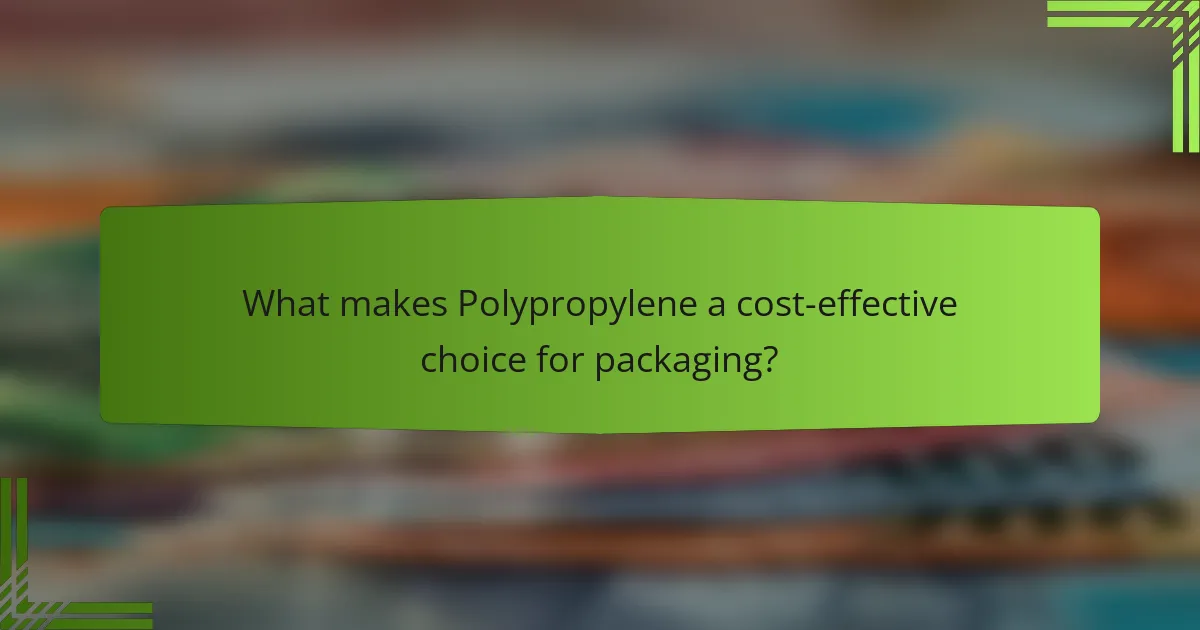
What makes Polypropylene a cost-effective choice for packaging?
Polypropylene is a cost-effective choice for packaging due to its low production costs and versatility. The material is lightweight, which reduces shipping expenses. Polypropylene also has a high strength-to-weight ratio, allowing for thinner packaging without compromising durability. Its resistance to moisture and chemicals extends product shelf life, minimizing waste. Additionally, polypropylene can be recycled, further reducing overall costs. The global polypropylene market was valued at approximately $75 billion in 2020, indicating its widespread use and acceptance. These factors collectively contribute to its cost-effectiveness in packaging applications.
How does the manufacturing process of Polypropylene influence its cost?
The manufacturing process of Polypropylene significantly influences its cost. The primary methods of production include polymerization techniques such as bulk, solution, and gas-phase processes. Each method has different energy requirements and raw material costs. For instance, gas-phase polymerization tends to be more efficient and cost-effective due to lower energy consumption. The choice of catalyst also affects production costs. High-performance catalysts can increase yield but may raise initial investment costs. Additionally, the scale of production plays a crucial role; larger facilities can benefit from economies of scale, reducing per-unit costs. Market demand and supply chain factors further impact pricing. Overall, variations in manufacturing processes contribute to fluctuations in Polypropylene costs.
What are the economic benefits of using Polypropylene in large-scale production?
Polypropylene offers significant economic benefits in large-scale production. It is cost-effective due to its low raw material cost and high availability. The production process of polypropylene is efficient, leading to lower manufacturing costs. Its lightweight nature reduces transportation expenses, enabling savings in logistics. Polypropylene also has a long service life, minimizing replacement and maintenance costs. Additionally, it is recyclable, which can lower waste disposal costs and promote sustainability. These factors contribute to overall cost savings and profitability in large-scale applications.
How does Polypropylene’s recyclability affect its overall cost-effectiveness?
Polypropylene’s recyclability significantly enhances its overall cost-effectiveness. Recycled polypropylene can reduce production costs by approximately 30% compared to virgin material. This is due to lower energy requirements and reduced raw material expenses. Additionally, the recycling process generates less waste, minimizing disposal costs. The market demand for recycled polypropylene is growing, which can further stabilize prices. According to a study from the American Chemistry Council, recycling polypropylene can lead to substantial savings in energy and resources. Thus, the recyclability of polypropylene contributes to both economic and environmental benefits.
What are the long-term financial advantages of Polypropylene packaging?
Polypropylene packaging offers significant long-term financial advantages. Its durability reduces replacement costs over time. This material is resistant to moisture and chemicals, enhancing product shelf life. Lower spoilage rates lead to decreased waste and increased profitability. Polypropylene is lightweight, reducing shipping costs. Its recyclability can lower disposal expenses. The material’s versatility allows for cost-effective manufacturing processes. Overall, these factors contribute to substantial savings for businesses using polypropylene packaging.
How does using Polypropylene reduce shipping and handling costs?
Using polypropylene reduces shipping and handling costs due to its lightweight nature. This material is significantly lighter than alternatives like glass or metal. The reduced weight leads to lower shipping fees, as carriers often charge based on the weight of the package. Additionally, polypropylene’s durability means it can withstand rough handling without damage. This resilience decreases the likelihood of returns or replacements, saving costs related to product loss. Furthermore, polypropylene can be manufactured in various sizes and shapes, optimizing space during transportation. Efficient packing reduces the number of trips needed, further lowering costs. Overall, these factors combined contribute to a significant reduction in shipping and handling expenses.
What are the cost comparisons with alternative packaging materials?
Polypropylene packaging typically costs less than many alternative materials. For instance, polypropylene averages $0.80 to $1.00 per pound. In comparison, polyethylene can range from $0.90 to $1.20 per pound. Glass packaging is significantly more expensive, often exceeding $2.00 per pound. Additionally, paper-based materials can vary between $1.00 and $1.50 per pound. These cost differences make polypropylene an attractive option for manufacturers seeking budget-friendly solutions. The lower cost of polypropylene can lead to reduced overall packaging expenses in large-scale production.
What are some best practices for utilizing Polypropylene in packaging?
Use Polypropylene (PP) for packaging due to its versatility and strength. Select the appropriate grade of PP based on the product’s requirements. Utilize clear or colored PP films for visibility and branding. Ensure proper sealing techniques to maintain freshness and prevent leaks. Incorporate recycled PP to enhance sustainability in packaging. Design packaging that optimizes space and reduces waste. Test the packaging under various conditions to ensure durability. Regularly review and update practices based on industry standards and innovations.
Polypropylene is a versatile and durable material widely used in packaging applications, including containers, bottles, and flexible formats like bags. This article outlines the key benefits of polypropylene, such as its lightweight nature, moisture resistance, and recyclability, which contribute to cost-effectiveness and sustainability. It also discusses the durability of polypropylene, highlighting its resistance to temperature fluctuations and chemicals, which enhances product shelf life and reduces packaging waste. Additionally, the article compares polypropylene to alternative materials, emphasizing its economic advantages in large-scale production and shipping.
